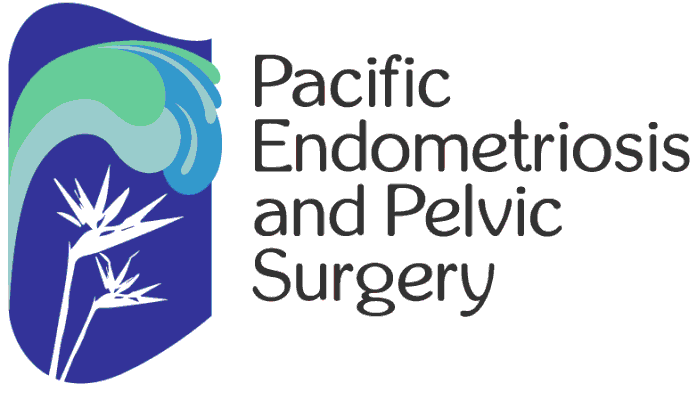Interventions that enhance resilience
Resilience – the ability to recover quickly from difficulties. A skill that can be learned by those with chronic illness, including chronic pain.
- Identify individual character strengths and promote their use in regular and novel ways.
- Strengths such as hope, kindness, social intelligence, self-control and perspective buffer against the effects of stress, trauma and physical pain.
Learn your character strengths
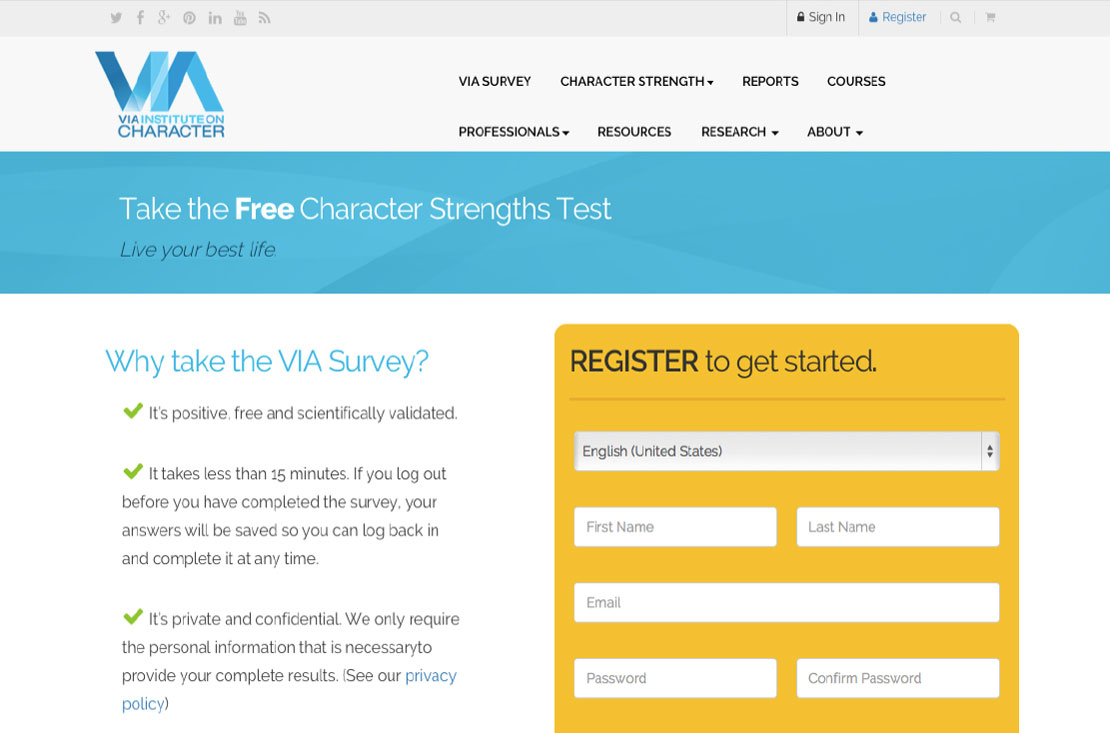
www.viacharacter.org/Survey/Account/Register
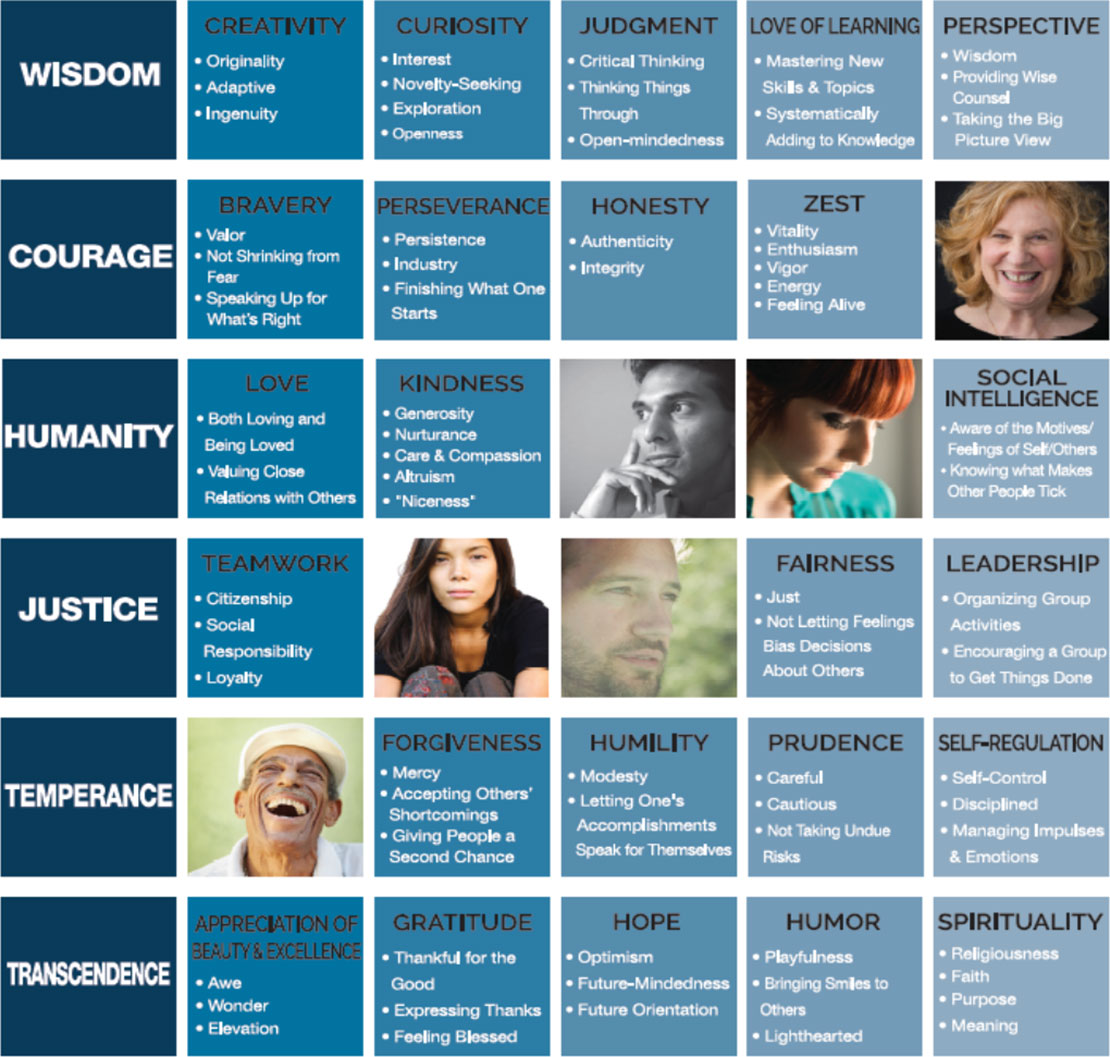
Keeping a Gratitude Diary
- Every day, write down 3 things for which you are grateful. It can be anything – feeling the
sunshine on your face, happy that a friend phoned, receiving a present, being able to
take a walk, anything. Work out a time to do this. Ideally, around the same time every
day works best. - Make a commitment to yourself that you will write down 3 things every day – this is very
important. - The 3 things MUST be DIFFERENT each time. Never repeat anything.
- Smile as you write them down. This will help you to feel grateful.
- You can write a lot about each thing, get really detailed, write why you are grateful for it. Or if you don’t have time, just write one line.
Savoring a Beautiful Day
- Set aside a block of time for your own pleasures. Set aside a minimum of one hour or a maximum of a full eight-hour day. A half-day is just about
perfect for the first time you do this exercise. - Block that time out on your calendar now, and do not let anything interfere, if possible. Next plan one activity or, even better, a sequence of activities that brings you real pleasure, and carry them out as you planned them.
- Here is the further twist. Savor each of the activities using all of your senses and with feelings of gratitude and optimism.
Adapted from: Seligman, Park & Peterson
Intentional Kindness
Everyday we do kind things and fail to recognize the frequency, meaning and appreciation by others of these small acts.
- In this exercise, you will on a daily basis do one intentionally kind thing for a loved one, one for a complete stranger and one for yourself.
- When you do these kind things for others, look the person in the eye and be gracious. Expect nothing in return, but acknowledge the gratitude if offered.
- When you do the kind thing for yourself, acknowledge the importance of self-care and kindness.
- Log these acts in a journal every day for seven days. Note what the act of kindness was and how doing it made you feel.
Hassett, Park & Peterson
Three Good Things
Every night for the next week, right before you go to bed, write down three things that went particularly well on that day. These things can be ordinary and small in importance or relatively large in importance. Next to each positive event in your list, answer the question, “Why did this good thing happen?”

Seligman ME, Rashid T, Parks AC. Positive psychotherapy. The American psychologist.
Nov 2006;61(8):774-788. Seligman et al. American psychologist2005;60(5):410-42.
Positive Piggy Bank
Every evening think about the people, things or events that made you happy that day. You may make a list if you like. Pick one of these and spend a moment savoring it. What made it so special to you? Now, write down this moment on a “currency” slip. Use enough detail that you can immediately recall what happened later. Next, add the date, fold up your happy memory “currency,” and drop it in the piggy bank. You will make these happy memory “deposits” in the same way every evening for the next 30 days.
Every evening think about the people, things or events that made you happy that day. You may make a list if you like. Pick one of these and spend a moment savoring it. What made it so special to you? Now, write down this moment on a “currency” slip. Use enough detail that you can immediately recall what happened later. Next, add the date, fold up your happy memory “currency,” and drop it in the piggy bank. You will make these happy memory “deposits” in the same way every evening for the next 30 days.
At the end of 30 days, you will “close your account.” This means that you will withdraw all of the “currency” from your piggy bank and read each and every one of the deposited happy memories. As you read them, try to recall details of the happy event and what made it so special to you at the time. Enjoy!
Hassett et al. Studies underway
Preliminary Data!
Study of adults who did a 1-month Positive Piggy Bank compared to controls who did not.
Those who did the Positive Piggy Bank showed improvement in their life satisfaction.
Hassett et al. Preliminary data.
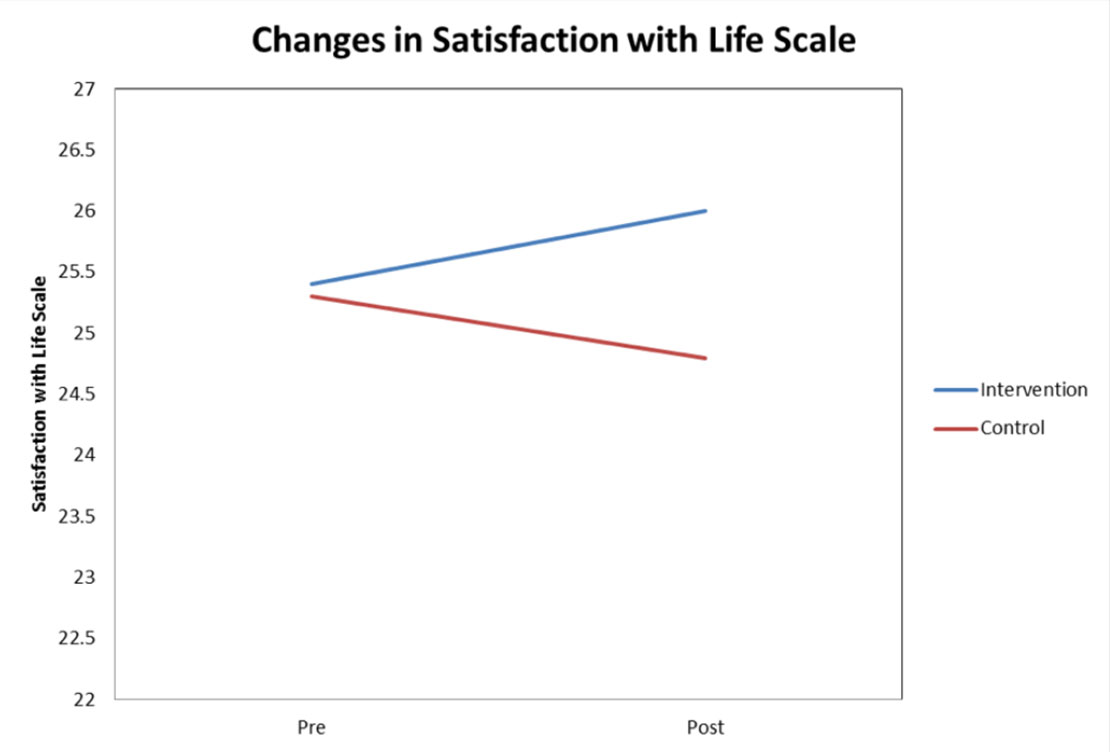
Hassett et al. Preliminary data: N=89
Patient empowerment via technology
Novel interventions based on the principles of positive psychology.
- Tailored for chronic pain
- Increase well-being and functional status
- Web-based, open access (CBT [FibroGuide], PPT)

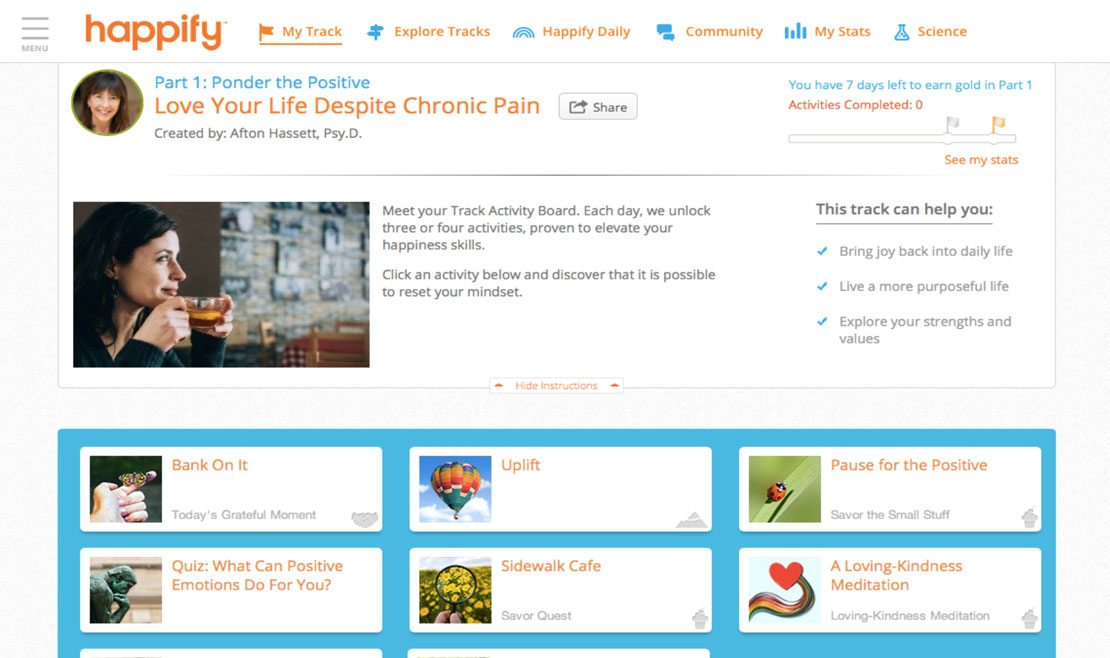
Acknowledgments
Daniel J. Clauw, MD
Chad M. Brummett, MD
Jenna Goesling, Ph.D.
Richard E. Harris, Ph.D.
Steven E. Harte, Ph.D.
Ronald Wasserman, MD
David A. Williams, Ph.D.
Alex Tsodikov, Ph.D.
Stephanie Moser, Ph.D.
Jennifer Wolfe, MA
Natalie Gulau, BA
Kathy Scott, BSN
Andrew Clauw, BA
Emily Hogan
Regina Onishchenko
Funding: National Institute of Mental Health
Bristol-Myers Squibb, Inc.
American Society of Regional Anesthesia & Pain Medicine
Metzger Family Foundation
University of Michigan, Department of Anesthesiology

Please the author on twitter
@AftonHassett

